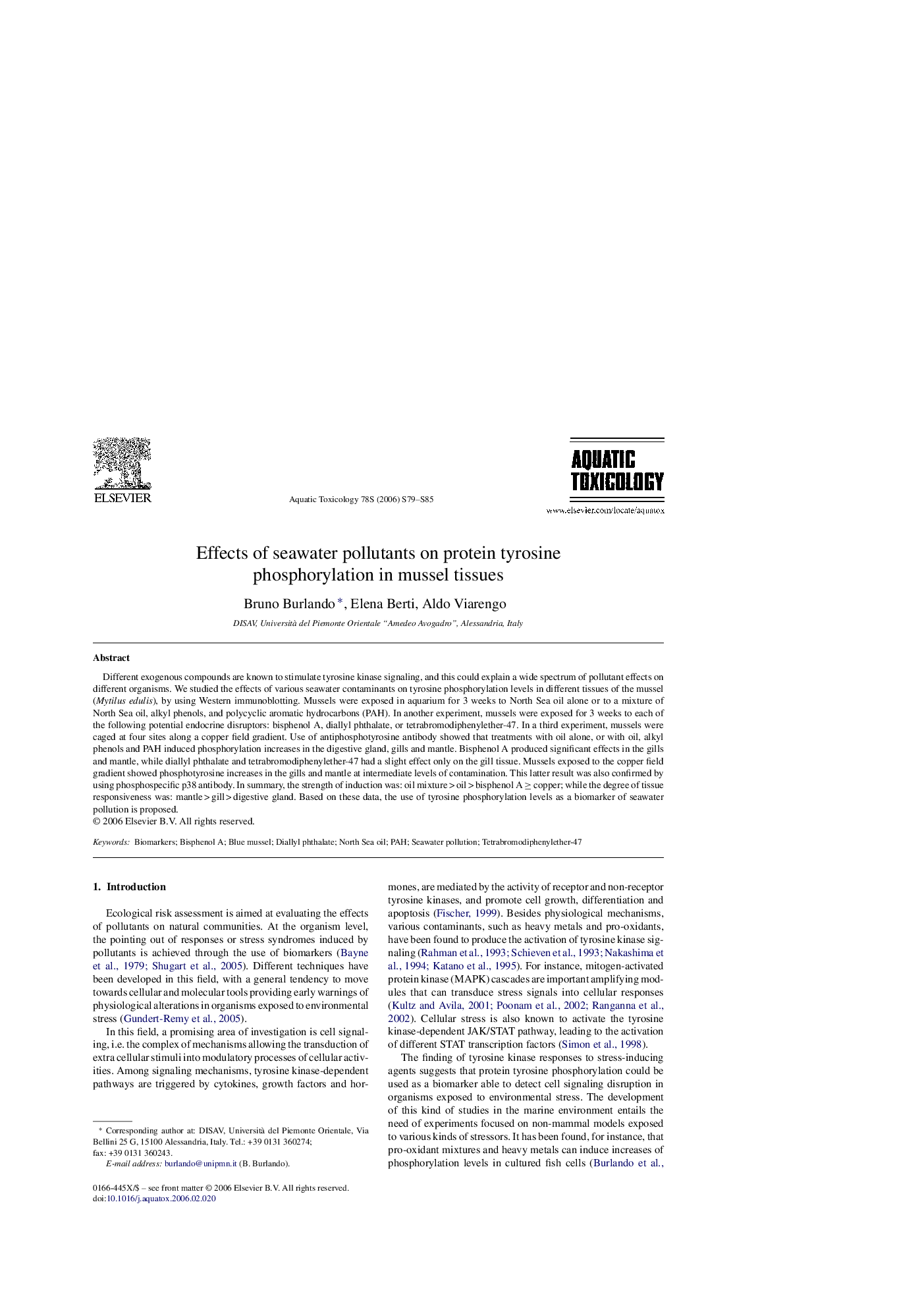| Article ID | Journal | Published Year | Pages | File Type |
|---|---|---|---|---|
| 4531347 | Aquatic Toxicology | 2006 | 7 Pages |
Abstract
Different exogenous compounds are known to stimulate tyrosine kinase signaling, and this could explain a wide spectrum of pollutant effects on different organisms. We studied the effects of various seawater contaminants on tyrosine phosphorylation levels in different tissues of the mussel (Mytilus edulis), by using Western immunoblotting. Mussels were exposed in aquarium for 3 weeks to North Sea oil alone or to a mixture of North Sea oil, alkyl phenols, and polycyclic aromatic hydrocarbons (PAH). In another experiment, mussels were exposed for 3 weeks to each of the following potential endocrine disruptors: bisphenol A, diallyl phthalate, or tetrabromodiphenylether-47. In a third experiment, mussels were caged at four sites along a copper field gradient. Use of antiphosphotyrosine antibody showed that treatments with oil alone, or with oil, alkyl phenols and PAH induced phosphorylation increases in the digestive gland, gills and mantle. Bisphenol A produced significant effects in the gills and mantle, while diallyl phthalate and tetrabromodiphenylether-47 had a slight effect only on the gill tissue. Mussels exposed to the copper field gradient showed phosphotyrosine increases in the gills and mantle at intermediate levels of contamination. This latter result was also confirmed by using phosphospecific p38 antibody. In summary, the strength of induction was: oil mixture > oil > bisphenol A â¥Â copper; while the degree of tissue responsiveness was: mantle > gill > digestive gland. Based on these data, the use of tyrosine phosphorylation levels as a biomarker of seawater pollution is proposed.
Related Topics
Life Sciences
Agricultural and Biological Sciences
Aquatic Science
Authors
Bruno Burlando, Elena Berti, Aldo Viarengo,
